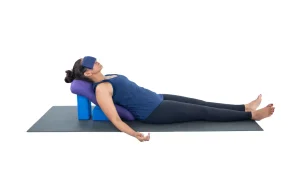
Let’s be honest. Managing a chronic illness can feel like a full-time job you never applied for. Doctor’s appointments, medication schedules, unpredictable flares—it’s a lot. And sometimes, the standard playbook just… isn’t enough. You’re left searching for more, for ways to feel just a little bit better.
That’s where the concept of biohacking comes in. It sounds like something from a sci-fi movie, but honestly, it’s far more accessible. Think of it as personal science. It’s about making small, incremental changes to your diet, lifestyle, and environment, then tracking the results to see what actually works for your unique body. For those of us navigating the complex waters of chronic conditions, it’s a powerful framework for becoming the expert on your own health.
What Exactly is Biohacking? (It’s Not Just for Tech Bros)
Sure, you might picture Silicon Valley elites sipping bulletproof coffee and wearing sleep trackers. But at its heart, biohacking is simply about curiosity and data. It’s the process of asking: “If I change this one thing, what happens to that symptom?” It’s a systematic approach to self-experimentation.
For chronic illness management, this is a game-changer. It moves you from a passive patient to an active investigator. You’re no longer just treating symptoms; you’re hunting for their root causes and triggers. You become a detective on the case of your own well-being.
Foundational Biohacks: The Non-Negotiables
Before we dive into the fancy gadgets, let’s talk basics. These are the low-cost, high-impact areas where everyone should start. They’re the bedrock.
1. Master Your Sleep Hygiene
You know that brutal flare that always follows a night of terrible sleep? There’s a reason. Sleep is when your body repairs itself. For chronic illness, it’s not a luxury; it’s medicine.
- Get Ritualistic: A consistent wind-down routine signals to your nervous system that it’s time to shift into rest mode. An hour before bed, dim the lights, put your phone in another room (seriously!), and read a physical book or listen to calm music.
- Embrace the Dark: Even small amounts of light from a charger or streetlamp can disrupt melatonin production. A good sleep mask or blackout curtains can be a total game-changer for sleep quality.
- Track It: You don’t need a fancy ring to start. Just jot down in a notebook: what time you went to bed, how you felt the next day, and any notable symptoms. Patterns will emerge.
2. Hack Your Nutrition with an Elimination Diet
Food is information. For many with autoimmune diseases, IBS, or chronic inflammation, certain foods are the wrong kind of information—they’re noise that triggers a reaction.
The gold standard biohack here is an elimination diet. It’s not about weight loss; it’s a structured experiment to identify food sensitivities. You temporarily remove common triggers (like gluten, dairy, soy, eggs, and sugar), then methodically reintroduce them one by one while tracking your body’s response. The data you collect is pure gold.
3. Manage Your Stress with Micro-practices
Stress isn’t just in your head. It directly impacts your immune system, gut health, and inflammation levels—the core pillars of most chronic illnesses. Telling someone to “just relax” is useless. But biohacking offers tiny, actionable tools.
- Box Breathing: In for 4 counts, hold for 4, out for 4, hold for 4. Repeat 5 times. This can short-circuit a stress response almost instantly.
- Cold Exposure: A 30-second blast of cold water at the end of your shower can boost dopamine and reduce inflammation. It’s uncomfortable, sure, but the payoff in mental clarity and reduced pain can be massive.
- Nature Therapy: Just 20 minutes outside in a park (they call it “forest bathing”) can significantly lower cortisol levels. It’s a data-backed hack that’s absolutely free.
Next-Level Tracking: From Notebooks to Wearables
Once you’ve got the basics down, technology can offer deeper insights. The key is to not get overwhelmed. Pick one thing to measure.
| What to Track | Tool Options | Why It Matters for Chronic Illness |
| Heart Rate Variability (HRV) | Oura Ring, Whoop Strap, Apple Watch | HRV is a brilliant marker of your nervous system’s resilience. A low HRV often predicts a flare or crash, giving you a chance to rest before you’re forced to. |
| Blood Glucose | Continuous Glucose Monitor (CGM) | Even if you’re not diabetic, glucose spikes drive inflammation. Seeing which foods cause your blood sugar to rollercoaster is incredibly empowering for managing energy and pain. |
| Sleep Stages | Basic fitness trackers or dedicated sleep rings | It’s not just about duration. Seeing how much deep sleep and REM you’re getting can explain next-day fatigue and cognitive function (“brain fog”). |
A Word of Caution: Biohacking Responsibly
This is crucial. Biohacking is about working with your doctor, not replacing them. Always, always discuss new supplements, extreme diets, or protocols with your healthcare team. What works for one person could be dangerous for another. Your body is not a machine; it’s a complex, interconnected ecosystem. Go slow. Change one variable at a time. And listen to it—the data is important, but how you feel is the most important metric of all.
The goal isn’t to become a perfect, optimized human. That’s exhausting and unrealistic, especially with a chronic condition. The goal is to find little pockets of relief, more good days, and a sense of agency. It’s about collecting clues until you can finally see the map of your own body. And that is the most powerful hack there is.







